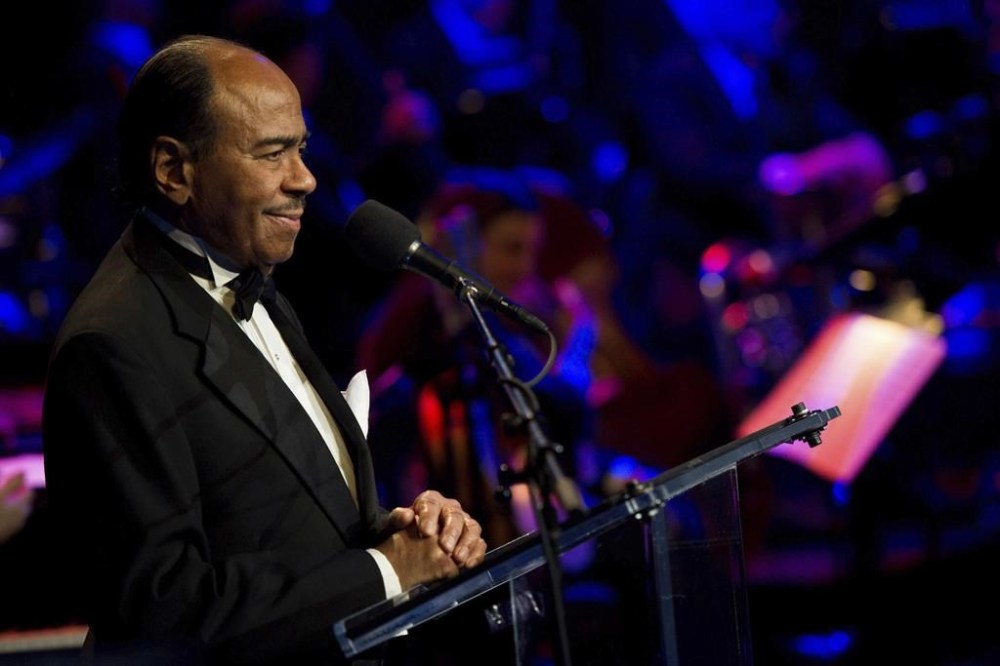Jazz saxophonist and composer Benny Golson dies at 95
Advertisement
Read this article for free:
or
Already have an account? Log in here »
To continue reading, please subscribe:
Monthly Digital Subscription
$0 for the first 4 weeks*
- Enjoy unlimited reading on winnipegfreepress.com
- Read the E-Edition, our digital replica newspaper
- Access News Break, our award-winning app
- Play interactive puzzles
*No charge for 4 weeks then price increases to the regular rate of $19.00 plus GST every four weeks. Offer available to new and qualified returning subscribers only. Cancel any time.
Monthly Digital Subscription
$4.75/week*
- Enjoy unlimited reading on winnipegfreepress.com
- Read the E-Edition, our digital replica newspaper
- Access News Break, our award-winning app
- Play interactive puzzles
*Billed as $19 plus GST every four weeks. Cancel any time.
To continue reading, please subscribe:
Add Free Press access to your Brandon Sun subscription for only an additional
$1 for the first 4 weeks*
*Your next subscription payment will increase by $1.00 and you will be charged $16.99 plus GST for four weeks. After four weeks, your payment will increase to $23.99 plus GST every four weeks.
Read unlimited articles for free today:
or
Already have an account? Log in here »
Hey there, time traveller!
This article was published 23/09/2024 (446 days ago), so information in it may no longer be current.
NEW YORK (AP) — Jazz great Benny Golson, a tenor saxophonist and composer of standards such as “Killer Joe” and “Along Came Betty,” has died. He was 95.
Golson died Saturday at his home in Manhattan after a short illness, said Golson’s longtime agent, Jason Franklin.
Over his seven-decade musical career, Golson worked with some of the biggest luminaries in jazz, including Dizzy Gillespie, Lionel Hampton and John Coltrane. He built much of his reputation not as a performer but from his compositions, which also included “I Remember Clifford,” written in 1956 after trumpeter Clifford Brown, a friend, died in a car crash at age 25.

Born and raised in Philadelphia, Golson began learning the piano at age 9 and switched to the saxophone at age 14. He was still in high school when he started performing with other local musicians, including Coltrane, a childhood friend.
Golson began writing and arranging music while attending Howard University.
After stints in Gillespie’s big band and in drummer Art Blakey’s Jazz Messengers, Golson co-founded The Jazztet in 1959 with flugelhorn master Art Farmer.
The Jazztet disbanded in 1962, and Golson moved on to writing music for movies and for television shows such as “Mannix,” “M-A-S-H” and “Mission: Impossible.” He also arranged music for performers including Peggy Lee, Lou Rawls and Dusty Springfield.
After a hiatus of more than a dozen years, Golson resumed playing the saxophone in the mid-1970s and launched a new version of the Jazztet with Farmer in 1982. He continued performing and writing music into his 90s.
He published “Whisper Not: The Autobiography of Benny Golson” in 2016.
Franklin, who worked with Golson for 25 years, said Golson stopped performing when COVID-19 shut down music venues in 2020 but continued working on projects, such as giving interviews for a forthcoming documentary, “Benny Golson: Looking Beyond The Horizon.”
Franklin said Golson saw a rough cut of the film a few weeks ago and loved it. “He was so happy he got to see it,” he said.
Golson released dozens of albums as a solo artist and as a member of various ensembles.
He appeared as himself in the 2004 Steven Spielberg movie “The Terminal,” in which the main character, played by Tom Hanks, travels to New York from a fictional Eastern European country to obtain Golson’s autograph, which he needs to complete a collection of signatures of all of the 58 jazz musicians who assembled for the famous 1958 group photo “A Great Day in Harlem.”
Actor and musician Steve Martin recalled the film scene in a post on X on Sunday and said, “Thanks for all of the great music.”
With Golson’s death, Sonny Rollins is the last living subject of the photo who was an adult when it was taken.
Golson’s survivors include his wife, Bobbie Golson, daughter Brielle Golson and several grandchildren. Three sons preceded him in death.


